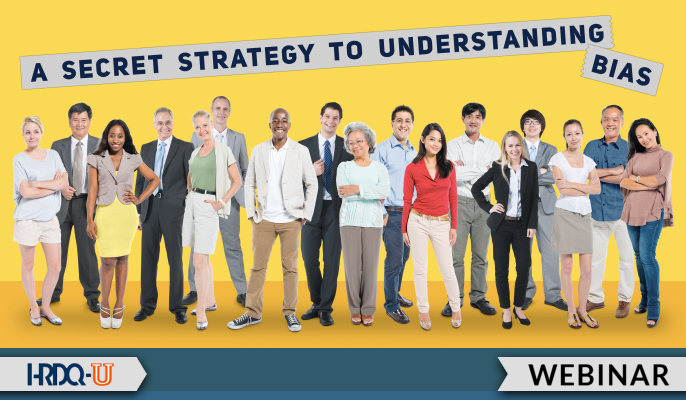- 827 Lincoln Ave. #B-10 West Chester, PA 19380
- support@hrdq.com
- +1-610-279-2002
Quick Links
Menu
Featured Topics
Menu
Total Results
We could not find what you're looking for. Please try again.No Record Found

Unconscious bias is ubiquitous, and in many circumstances, it can save time by filtering out extraneous details and narrowing our focus. But when it comes to treating others equitably and inclusively in the workplace or academic environment, bias can work against us. A newly developed tool called Biased Out can help users better understand where bias against others comes from, how it develops, and what we can do as individuals to push back against our own harmful biases.
In this webinar, attendees will learn about how Biased Out works from an interactive standpoint. Biased Out is designed as a simulation board game to engage users and help them understand common biases against marginalized groups. See how each of the interactions in the game serve as starting points for broader conversations around hot-button topics in diversity. Conversations around these issues are much easier when users have an interactive experience they are engaged in, which encourages them to be more open than in a lecture or seminar setting.
The webinar will also cover different ways to use the game depending on the environment, such as in a workplace training session or a conference. Attendees who are DE&I trainers will learn how they can run the game as a facilitator and in a setting that works for them. Biased Out is versatile and allows for use in an online setting if each user has a copy and comes with materials to support remote training sessions. However, a facilitator is not necessary to use the game, and similar value can be gained with use in a casual environment as well.
Attendees will learn about the secret strategy for understanding bias against marginalized groups and how Biased Out helps users see the systems of bias from a different perspective. It’s a strategy game that’s surprising, thought-provoking, and silly at times, and attendees will learn about some of the real-world implications of situations that occur during gameplay. When users can draw on in-game experiences and make real-world connections, the learning experience and engagement in the discussion are enhanced.
Attendees will also learn how Biased Out can be used to kickstart the transformation process of managing harmful biases on an individual level. Part of learning about bias is understanding how systemic biases occur on a collective basis; however, the decisions to perpetuate it occur on an individual basis. The more individuals take the initiative to understand certain systemic biases, the easier it is to recognize their own culpability and involvement in the spread of homogeneity, inequality, and exclusion.


Biased Out Board Game
Biased Out is designed as a simulation board game to engage users and help them understand common biases against marginalized groups.
Take 15% off your purchase of this training product with code HRDQ21 at checkout.
Brandon McCowan is a software engineer and inventor with over five years of experience in the health education industry. He holds a bachelor’s degree in biomedical sciences from La Sierra University and two master’s degrees in software engineering and business from Lipscomb University in Nashville, TN. He has helped build several simulations and games for various educational courses and is published in the Innovations in Clinical Neuroscience peer-reviewed journal. He also owns a patent on using game rewards as incentives for real-world behavior. He is the founder of Biased Out, a DEI game company, and lives in Redlands, CA, where he enjoys designing games and playing tennis.
Connect with Brandon by email at brandon@biasedout.com and at www.biasedout.com.
Training Tools for Developing Great People Skills
This event is sponsored by HRDQ. For 45 years HRDQ has provided research-based, off-the-shelf soft-skills training resources for classroom, virtual, and online training. From assessments and workshops to experiential hands-on games, HRDQ helps organizations improve performance, increase job satisfaction, and more.
Learn more at HRDQstore.com

Sign up to be notified of upcoming live webinars, in-depth workshops, podcasts, blog posts, promotions and much more. Stay ahead of the curve and subscribe for FREE today!